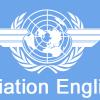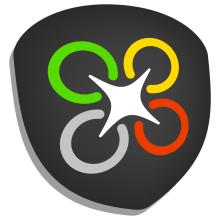Propozycje IAOPA do zmian dotyczących uprawnień IR dla licencji PPL
EASA rozpoczęła tworzenie przepisów mających uatrakcyjnić zdobycie uprawnień instrumentalnych (Instrument Rating dla pilotów General Aviation) udostępniając 21 września do komentowania, przez okres trzech miesięcy dokument: Kwalifikacje do latania w warunkach IMC (Qualifications for flying in Instrument Meteorological Conditions) dla licencji turystycznych. Pisaliśmy już o tym 23 września 2011 roku. Draft nowych regulacji, zapowiadający się dość obiecująco jest dostępny na stronie EASA pod numerem NPA 2011-16.
Przypominamy, że swoje uwagi można przekazywać do Agencji do 23 grudnia 2011 roku.
IAOPA-Europe, reprezentowana w tej dziedzinie przez Michaela Erb (IAOPA-EUR Vice President i Dyrektor Zarządzający AOPA-Germany) zebrała głos stowarzyszenia. Treść proponowanych zmian Stowarzyszenia, publikujemy poniżej. Jeśli masz swoje uwagi, możesz je zgłosić za pomocą narzędzia Comment Response Tool, dostępnego na stronie EASA (hub.easa.europa.eu/crt/).
IAOPA(EU) NPA 2011-16 RESPONSE
|
Item
|
.pdf
|
TOPIC
|
COMMENT RESPONSE
|
AUTHOR
|
|
|
i
|
|
Editorial
|
IAOPA(EU) notes that many proposals for mandatory requirements in the NPA have been prefaced by the word ‘should’ rather than ‘shall’. Although it is accepted that this is a consequence of EASA document terminology standards, the final document must be restructured to indicate more clearly which proposals are mandatory and which are recommended. |
NW
|
|
|
1
|
6
|
EIR 1.1 General. |
IAOPA(EU) agrees that the EIR should be extended to the CPL(A). |
NW
|
|
|
2
|
7
|
EIR 1.6 Reasons for proposal. |
IAOPA(EU) considers that a different emphasis should be put on the reason for proposing the EIR. This is primarily a rating which extends the privileges of a VFR-only pilot to include en-route flight under circumstances which require mandatory compliance with IFR, whether in VMC or IMC and as such we support it. However, only the instrument flight training appropriate to support such limited privileges is given and therefore the EIR should not be thought of as an ‘instrument’ rating in the true sense. IAOPA(EU) therefore proposes that the EIR should be re-titled ‘En-Route IFR Rating’. |
NW
|
|
|
3
|
8
|
EIR 1.6 Reasons for proposal. |
IAOPA(EU) agrees that, if used strictly within the associated rating privileges, the EIR can significantly enhance safety by reducing instances of inappropriate VFR flight. |
NW
|
|
|
4
|
8
|
Competence-based IR (C-B IR) 2.2 Possible restriction of privileges.
|
IAOPA(EU) strongly supports the Agency’s very welcome initiative of proposing the C-B IR. IAOPA(EU) also supports the Agency’s proposal to adopt the second option (‘non-HPA’) and not to restrict C-B IR privileges further. Additionally, the pragmatic proposal to relocate the requisite theoretical knowledge syllabus items pertinent to the operation of HPA under IFR is welcomed. |
NW
|
|
|
5
|
9
|
C-B IR 2.3 Learning Objectives (LOs). |
IAOPA(EU) welcomes the Agency’s proposal to reduce IR theoretical knowledge content to approximately 60% of its existing level, but would support any stakeholder who proposes further reductions. IAOPA(EU) does not consider that any of the LOs which have been proposed for removal or relocation should be retained in the C-B IR syllabus. |
NW
|
|
|
6
|
10
|
C-B IR 2.4 Multi-engine IR.
|
IAOPA(EU) considers that, since the whole essence of the C-B IR is ‘competency’, the proposed C-B IR course will be adequate for a multi-engine IR provided that the following supplementary clause is adopted: ‘Where multi-engine IR privileges are sought, the 25 hrs instrument instructional time shall also include a minimum of 5 hrs on multi-engine aeroplanes, of which 3 hrs may be may be in an FFS or FNPT II.’ In other words, although the entire 25 hrs of instrument instructional time could be conducted on multi-engine aeroplanes, a minimum of 2 of the specified 10 hrs of flight time in aeroplanes must be conducted in a multi-engine aeroplane and a maximum of 3 of the remainder may be conducted in an FSS or FNPT II. |
NW
|
|
|
7
|
10
|
C-B IR 2.7 Crediting for third country rating holders. |
IAOPA(EU) welcomes proposals for straightforward conversion of existing ICAO-based third country IRs; our detailed proposals are in our comments on the Draft Opinion section of NPA 2011-16. IAOPA(EU) also considers that, although credit for military IRs is a national responsibility, generally similar credit should be granted to military IR holders as is proposed for ICAO-based third country IRs. |
NW
|
|
|
8
|
11
|
Sailplane cloud flying rating (SCR) 3.1 General.
|
Although IAOPA(EU) welcomes the Agency’s Option 1 proposals for the SCR and notes the particular need for such a rating in certain parts of the EU, we also note that the NPA does not address the parallel needs for sailplane towing in such areas, particularly in areas of significant elevation. NPA 2011-16 does not, in its current state, provide a proportionate solution for sailplane towing operations near cloud in most airspace categories; the only current solution being for the towing pilot to hold an EIR, which is clearly unreasonable for the average sailplane club tow pilot. IAOPA(EU) proposes an amendment to FCL.600 in order to address this shortcoming. (See response to II. Regulatory Impact Assessment for the sailplane cloud flying rating 2.1 WHAT IS THE ISSUE AND WHO IS AFFECTED?)
|
NW
|
|
|
9
|
12
|
5. Regulatory amendment. |
IAOPA(EU) welcomes proposals to amend the rules identified in this paragraph and proposes an amendment to FCL.600 in the spirit of the EASA management board’s call for greater rulemaking flexibility. We also note that the European Commission has already accepted greater flexibility in other areas of aviation legislation, notably SERA and EU-OPS1, in order to meet national needs and consider that similar flexibility may reasonably be applied to aircrew licensing regulation. |
NW
|
|
|
10
|
16
|
Draft Opinion Subpart G – Instrument Rating. |
IAOPA(EU) notes that NPA 2011-16 does not include provision for the specific national needs of certain Member States. These include (but are not limited to): 1. Operations under IFR conducted entirely within the airspace of a Member State (MS) by a national of that MS flying an aeroplane registered in that MS using the national language of that MS. For example, a French pilot operating an F-registered aeroplane under IFR in French airspace communicating in the French language. 2. An acceptable solution to the future of the UK IMC rating when used on EASA aeroplanes entirely within UK airspace. 3. An acceptable solution to sailplane towing operations within certain airspace categories when the cloudbase is above 3000ft a.m.s.l. IAOPA(EU) notes that JAR-FCL 1.175 includes para. 1.175(b) which would solve these shortcomings if adopted within an amendment to FCL.600. Accordingly, IAOPA(EU) strongly recommends the following amendment to FCL.600 IR – General:
Adoption of this amendment would enable the Commission to fulfil earlier commitments given to the European Parliament in respect of a solution to the UK IMCR; however, more significantly it would enhance safety where Member States have identified a specific national need. In accordance with the general principal of subsidiarity, detailed requirements for such national qualifications should be devolved to the competent authority of the Member State. |
NW
|
|
|
11
|
17
|
FCL.825 (a) (1)
|
IAOPA(EU) proposes that the privileges of the EIR should be extended to flight by night under IFR if the EIR holder also holds a valid Night Rating. This is particularly necessary for Member States of predominantly northern latitudes whose periods of daytime are limited at certain parts of the year. |
NW
|
|
|
12
|
17
|
FCL.825 (a) (3)
|
IAOPA(EU) does not support the concept of a specific ‘multi-engine EIR’. However, IAOPA(EU) agrees that, for pilots who only obtain their first multi-engine class or type rating after the initial issue of the EIR, the privileges of the EIR should only be extended to multi-engine aeroplanes after receiving suitable training and testing. The IFR limitations of the EIR are such that we consider 3 hr of instrument flight instruction in multi-engine aeroplanes to be excessive in this context. We propose that a minimum of 1 hr of instrument flight instruction in multi-engine aeroplanes in the en-route phase of flight should be sufficient before the applicant passes the EIR Skill Test in a multi-engine aeroplane. |
NW
|
|
|
13
|
18
|
FCL.825 (e) (typographical error).
|
The final sentence of this paragraph should read ‘For a single engine EIR......’ |
NW
|
|
|
14
|
18
|
FCL.825 (f) (1) Validity, revalidation and renewal. |
IAOPA(EU) considers that the limitations of the EIR are such that a 1 year validity period is disproportionate. We propose that an EIR shall be valid for 2 years. |
NW
|
|
|
15
|
18
|
FCL.830 (a) Sailplane Cloud Flying Rating |
IAOPA(EU) considers that this paragraph shall include suitable wording to preclude inappropriate use of the SCR by TMG or powered sailplane pilots for extended IFR cruising. We therefore propose the following amendment to FCL.830 (a):
|
NW
|
|
|
16
|
21
|
A.2. IR(A) – Competency-based modular flying training course FLIGHT INSTRUCTION 6 (b)
|
IAOPA(EU) has considerable concerns regarding pre-course assessment flights used by an ATO to assess credit and training needs. Such flights lack standardisation, are open to commercial pressures and abuse and serve little worthwhile purpose. The C-B IR is essentially competency-based by definition and no ATO will propose an applicant for a Skill Test unless that applicant has demonstrated adequate preparedness. We therefore propose that the sentence ‘To determine the amount of hours credited and to establish the training needs, the applicant shall complete a pre-course assessment flight at an ATO.’ shall be deleted. |
NW
|
|
|
17
|
22
|
A.2. IR(A) – Competency-based modular flying training course FLIGHT INSTRUCTION 8
|
IAOPA(EU) agrees with sub-paragraphs 8(a) and 8(c), but has the following comments with regard to the rest of paragraph 8: 8(b). IAOPA(EU) considers that the demonstration of acquisition of knowledge to which this sub-paragraph refers can be satisfactorily assessed by the Examiner during the pre-flight preparation and conduct of the C-B IR Skill Test, supplemented if necessary by oral questions. It should be noted that the requirement for the holder of an IR issued in compliance with the requirements of Annex 1 to the Chicago Convention to sit further written theoretical knowledge examinations when converting to a EU IR is widely regarded as an expensive waste of time, which serves very little practical purpose. An Examiner will be able to make a much more pertinent assessment of the applicant’s relevant knowledge; we strongly recommend that oral assessment in the manner described should satisfy the requirements of sub-paragraph 8(b). 8(d). IAOPA(EU) considers that 100hrs of instrument flight time as PIC is excessive. Pilots with considerable flight time under IFR would be disadvantaged; there would be safety implications for a pilot to fly deliberately in IMC, with the attendant risks of turbulence and icing, merely to reach the 100hrs requirement. We therefore recommend that sub-paragraph 8(d) is reworded as follows:
We remind the Agency that the C-B IR is ‘competency based’ by definition and that, although some relevant experience is clearly needed, the Skill Test will provide entirely sufficient assessment of the applicant’s suitability to be issued with the C-B IR. |
NW
|
|
|
18
|
22
|
A.2. IR(A) – Competency-based modular flying training course PRE COURSE ASSESSMENT9
|
IAOPA(EU) considers that a pre-course assessment flight is entirely unnecessary. There should be no doubt about credit for previous instrument flight time, provided that this has been properly recorded and it is not appropriate for any ATO to query credit allowed by the Agency’s regulatory proposals. In any event, the subsequent instrument flight training will, if properly conducted, reveal any omissions or weaknesses resulting from the applicant’s previous instrument flight training or experience. |
NW
|
|
|
19
|
185
|
GM1 FCL.825 En-Route Instrument Rating |
IAOPA(EU) agrees that the EIR shall require all departures, arrival and approaches to be flown in accordance with VFR. The EIR holder must also be made well aware that a need to fly an ‘Emergency IFR approach’ must only be declared in exceptional conditions and that the use of the EIR may of consequence be restricted, other than in the en-route segment, to fair weather conditions only. |
NW
|
|
|
20
|
185
|
AMC2 FCL.825(c) En-Route Instrument Rating FLIGHT INSTRUCTION (a)(6) |
IAOPA(EU) does not consider that this sub-paragraph is relevant for a rating whose privileges do not include flight in the instrument pattern. Hence we recommend that sub-paragraph (a)(6) is deleted. |
NW
|
|
|
21
|
186
|
AMC2 FCL.825(c) En-Route Instrument Rating FLIGHT INSTRUCTION (a)(14) |
IAOPA(EU) considers that this paragraph lacks objectivity. For example, ‘controlled airspace with a high density of traffic’ is a somewhat subjective requirement and may be difficult to achieve in practice. The general aim of this sub-paragraph will undoubtedly be recognised by training providers, but we do not consider that sub-paragraph (a)(14) is necessary and recommend that it should be deleted. |
NW
|
|
|
22
|
187
|
AMC4 FCL.825(e)(f) En-Route Instrument Rating Skill Test / Proficiency Check Section 3 Item j |
IAOPA(EU) considers that this item should be amended to read ‘Simulated diversion and simulated emergency IFR approach to an alternate aerodrome’. Although the privileges of the EIR are limited to en-route flight under IFR, the safe conduct of an ‘Emergency IFR approach’ is a perishable skill which requires periodic re-testing. |
NW
|
|
|
23
|
229-230
|
II. Regulatory Impact Assessment for the sailplane cloud flying rating 2.1 WHAT IS THE ISSUE AND WHO IS AFFECTED? |
IAOPA(EU) considers that the content of this paragraph explains the issues with clarity. However, the ICAO criteria to which this section makes reference are not restricted to sailplanes. The SCR makes adequate provision for the sailplane pilot; however, no similar provision is currently available for aircraft involved in towing sailplanes. Hence in Class E airspace with a cloudbase of 3100ft, a sailplane towing aeroplane operating from an aerodrome with an elevation of 1900 ft could not legally fly above 200 ft under VFR; for a sailplane towing pilot to be required to hold an EIR in order to conduct sailplane towing up to the cloudbase under such circumstances would, we consider, be disproportionate. This problem is more likely to exist in Member States with significant terrain elevation and large areas of Class E airspace than in others, demonstrating a clear need for flexibility in rulemaking to take account of national needs. We consider that a national rating permitting a pilot involved in sailplane towing operations to fly closer than 1000ft to the cloudbase, provided that the towing aeroplane does not enter cloud, would be an obvious solution. Hence we recommend the following amendment to FCL.600 IR – General in order for Member States with such national needs to develop suitable national ratings:
|
NW
|
Czytaj również:
Słowo o planach złagodzenia wymagań do uprawnień IR dla licencji turystycznych
EASA: Zawiadomienie o proponowanej zmianie dla uprawnień IR dla licencji PPL (i nie tylko)
PART-FCL – ATPL(H) & IR








![Rys. 10. Panel bezpieczników samolotu Tecnam P2006T zawierający bezpiecznik „LANDING GEAR” zabezpieczający obwód silnika pompy hydraulicznej układu chowania i wypuszczania podwozia [źródło: PKBWL] Rys. 10. Panel bezpieczników samolotu Tecnam P2006T zawierający bezpiecznik „LANDING GEAR” zabezpieczający obwód silnika pompy hydraulicznej układu chowania i wypuszczania podwozia [źródło: PKBWL]](/sites/default/files/styles/article_teaser_large/public/media/images/2025-12/PKBWL_Panel_bezpiecznikow_TECNAM.png?h=f77ad679&itok=I5wnle2n)







Komentarze